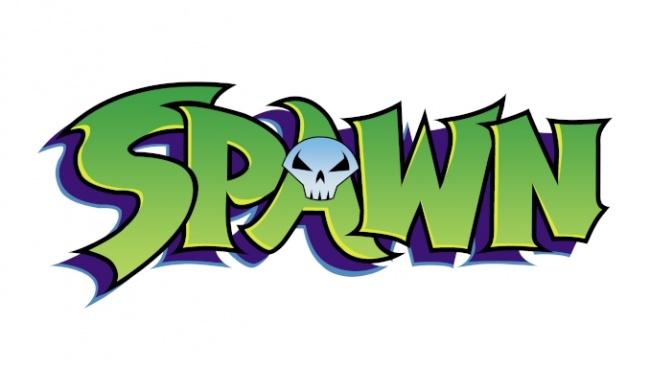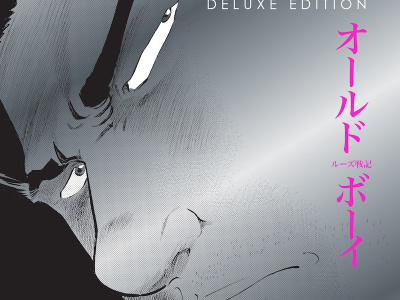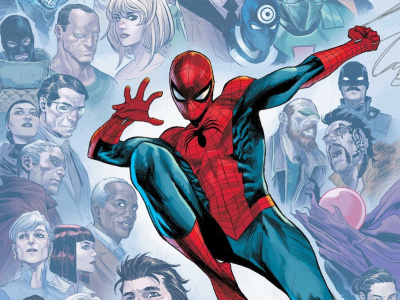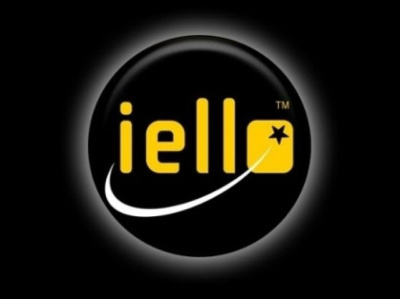The damages portion of the Gaiman vs. McFarlane trial ended quickly Thursday evening with a short hearing and jury decision on a relatively minor aspect of the case. That's because after a short recess, Gaiman decided to keep his copyright interest in characters he created for Todd McFarlane's Spawn comic--Medieval Spawn, and Cagliostro--rather than seeking breach of contract damages from McFarlane. Prior to the trial, Gaiman and McFarlane had stipulated that if it were determined that Gaiman had copyright interest in the three characters that one of his options would be to keep his interest and determine how much he was owed by McFarlane's companies by an audit of all uses of the creations in which Gaiman has a share. His other option would have been to seek breach of contract damages from McFarlane for failure to live up to the terms of the contract in which Gaiman gave up rights to Medieval Spawn and Cagliostro. Under the option Gaiman chose, the rights for Miracleman that McFarlane purchased from Eclipse remain in McFarlane's hands.
The only award left for the jury to decide was for the unauthorized use of Gaiman's name and biography on the back cover of the Angela trade paperback. Gaiman's attorneys had asked for $45,000, basing their claim on a contract that Gaiman had made with Big Entertainment in 1993. Gaiman had provided Big Entertainment with one-paragraph descriptions of five characters as well as a description of the world they inhabited in return for a payment of $45,000 and 8% royalties on comic sales and a 33% royalty on right sales. Big Entertainment then proceeded to publish a number of comics, such as Neil Gaiman's Teknophage, Neil Gaiman's Lady Justice, etc. rather than just the one comic that Gaiman had imagined -- a situation that he thought was analogous to exploitation of his name in the marketing of the Angela trade paperback.
McFarlane's attorneys countered that Gaiman had actually provided Big Entertainment with more than just his 'name'--that he had also created characters as well as a setting for a comic. Gaiman's attorney retorted by suggesting in his final argument to the jury that the use of Gaiman's name in a book published in 2000, well after Gaiman and McFarlane had become estranged, was a cynical exploitation of Gaiman's increased fame and a 'slap in the face,' since Gaiman received no royalties for the book. The jury found for Gaiman in precisely the amount requested. This amount is due from Image Comics.
The award of $45,000 pales beside the potential amount of money McFarlane and the various corporate defendants may owe Gaiman in royalties (on over $5 million wholesale worth of Angela and Medieval Spawn toys for example). When asked by ICv2 if he would appeal, McFarlane said it was too early to make that decision, though he appeared to be leaning that way, indicating that he had expected to win on at least some issues. When asked about his reaction to the jury's verdict in the first phase of the trial, McFarlane told ICv2 that it was a walk in the park compared with the first 'Tony Twist' trial, '...when the jury came back and said I owed $24.5 million,' referring to a jury award that was reversed on appeal.
Why did Gaiman choose to keep the character rights instead of seeking breach of contract damages (in addition to royalties due)? Although the amount of money he left on the table was large, it may pale next to what McFarlane is willing to give to get back unencumbered rights to a portion of his Spawn creation. One of the most emotional points in the trial was when McFarlane described discovering that he was no longer sole owner of all versions of Spawn, a character he'd created over twenty years ago in high school, and on which he'd built his comic, toy, and media empire. Threatened with forever sharing the rights to Medieval Spawn, Cagliostro, and Angela, characters that have taken on significant roles in the Spawn universe, McFarlane may be willing to cut a deal better than the one Gaiman could have enforced, and without all of the accounting issues that will otherwise have to be resolved.
What will Gaiman ask for in a deal? He's still likely to ask for the rights to Miracleman as part of any settlement. He's made it clear that he wants to acquire unencumbered rights to the property, reprint the old issues, and create new materials (see 'Marvel Snags Neil Gaiman'). Gaiman created Marvels and Miracles LLC, one of the plaintiffs in the suit, to own
and manage the rights to Miracleman, and has promised that after creators are compensated, proceeds will go to benefit two favorite industry charities -- the Comic Book Legal Defense Fund and ACTOR. It seems unlikely that he would not pursue that goal now.
Why did Gaiman win? The jury probably agreed with attorneys for both sides who argued that the trial was about credibility in their closing arguments. McFarlane had a number of credibility issues that may have been decisive. First, he claimed that he had repeatedly asked for, but not received, copies of Gaiman's DC contracts to verify the terms of those agreements. Yet Larry Marder, executive director of Image Comics (of which McFarlane was president), had reviewed some of Gaiman's contracts and prepared a summary of them for McFarlane, which McFarlane admitted having seen. Second, McFarlane claimed that the series of faxes between him and Gaiman (including the now-famous 'beauty' fax, in which McFarlane used the Canadian term to express satisfaction with a set of deal points previously sent, and the equally famous 'hurrah' fax, in which Gaiman celebrated having reached a deal) did not constitute a contract, but acted as if it had in sending a royalty statement and some Miracleman assets. Three employees close to McFarlane, including Larry Marder and Beau Smith, also indicated that they believed there had been a deal between the two based on representations from McFarlane. And last, the change of story regarding McFarlane's conversations with Terry Cunningham of DC, even though it may have been due to improved recollections, made it appear as if he were trying to go back and change past events. With Gaiman the more credible witness, the jury gave Gaiman a complete victory rather than splitting the baby, a common outcome in civil trials.
For full coverage of the trial, see the rest of our articles.
The verdict --
'Gaiman Sweep!'
McFarlane's cross-examination, closing arguments, and the case goes to the jury --
'Jury's Out on Gaiman vs. McFarlane.'
The first day ran long, so we broke our coverage into two parts:
'Wisconsin Courtroom Drama, Part 1'








